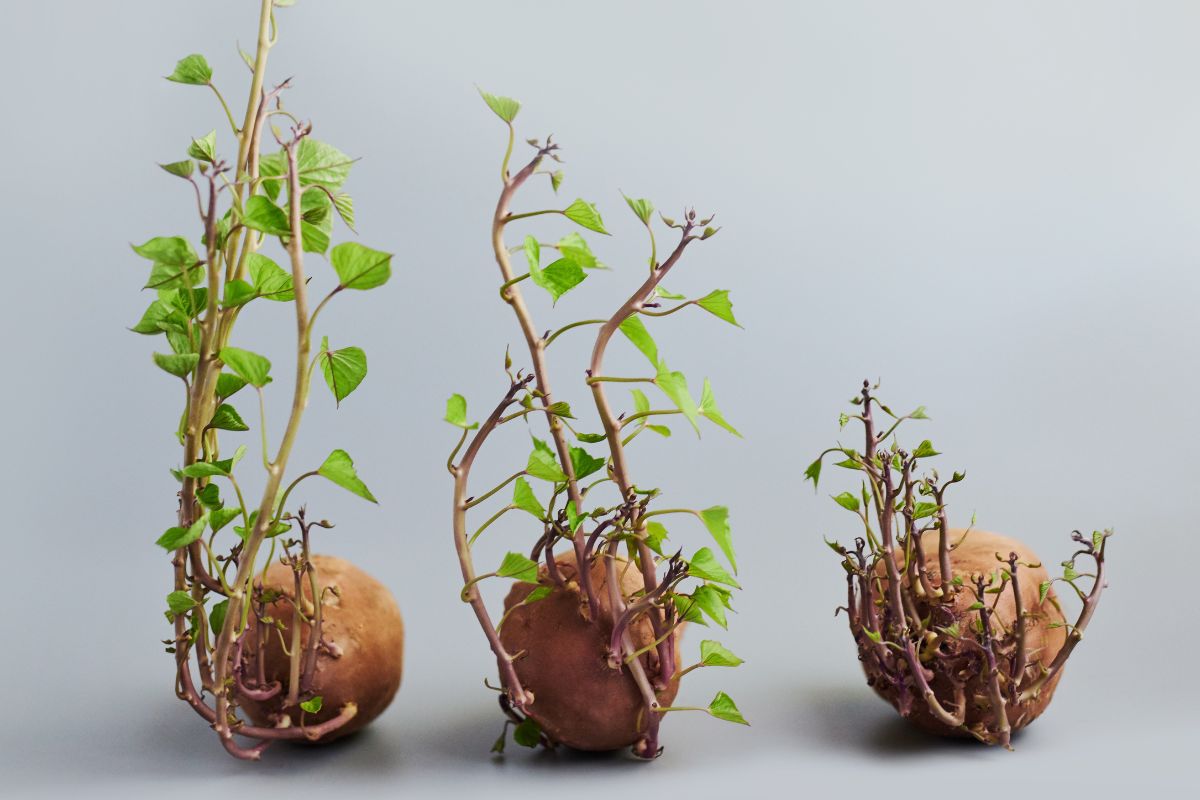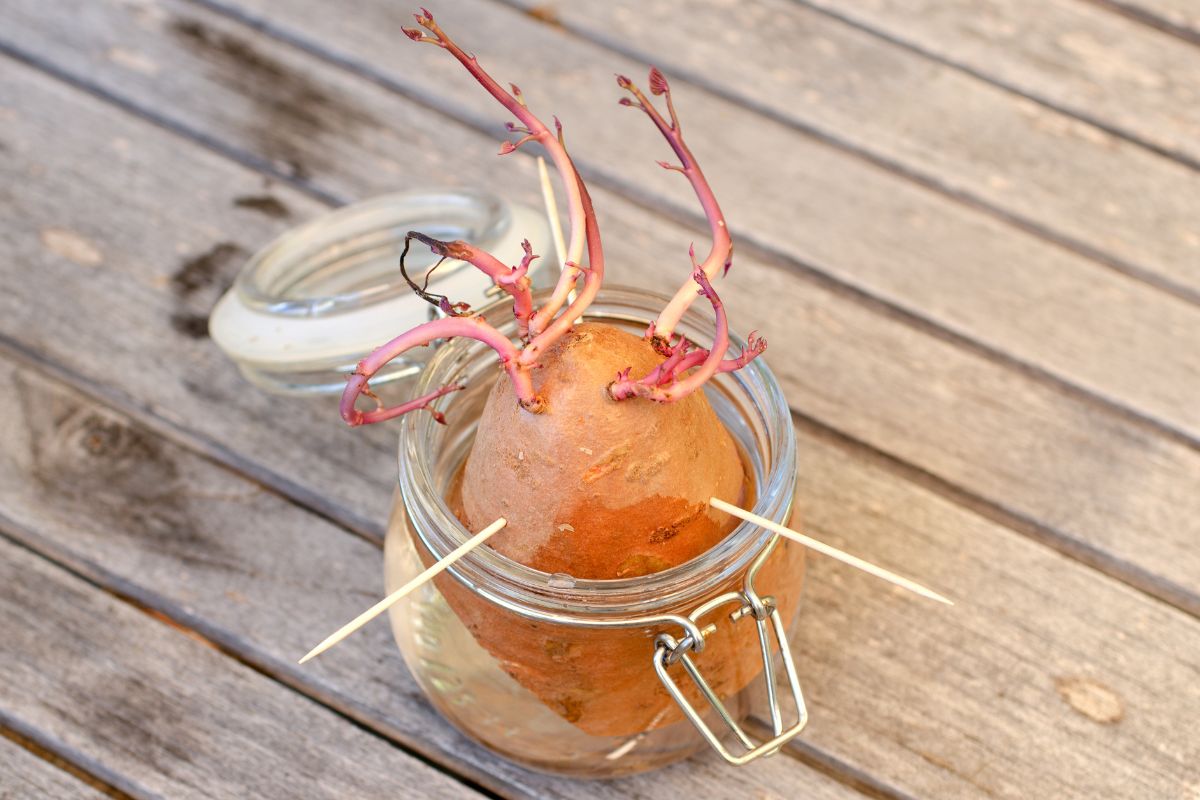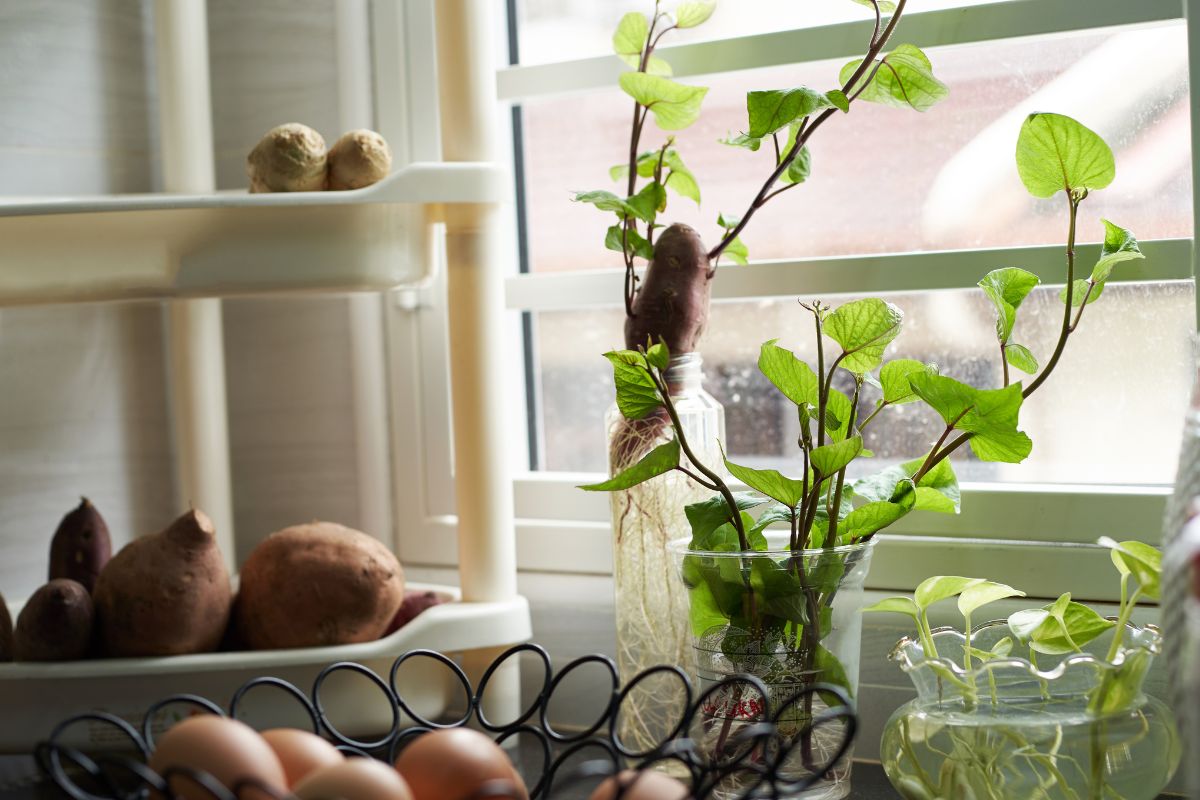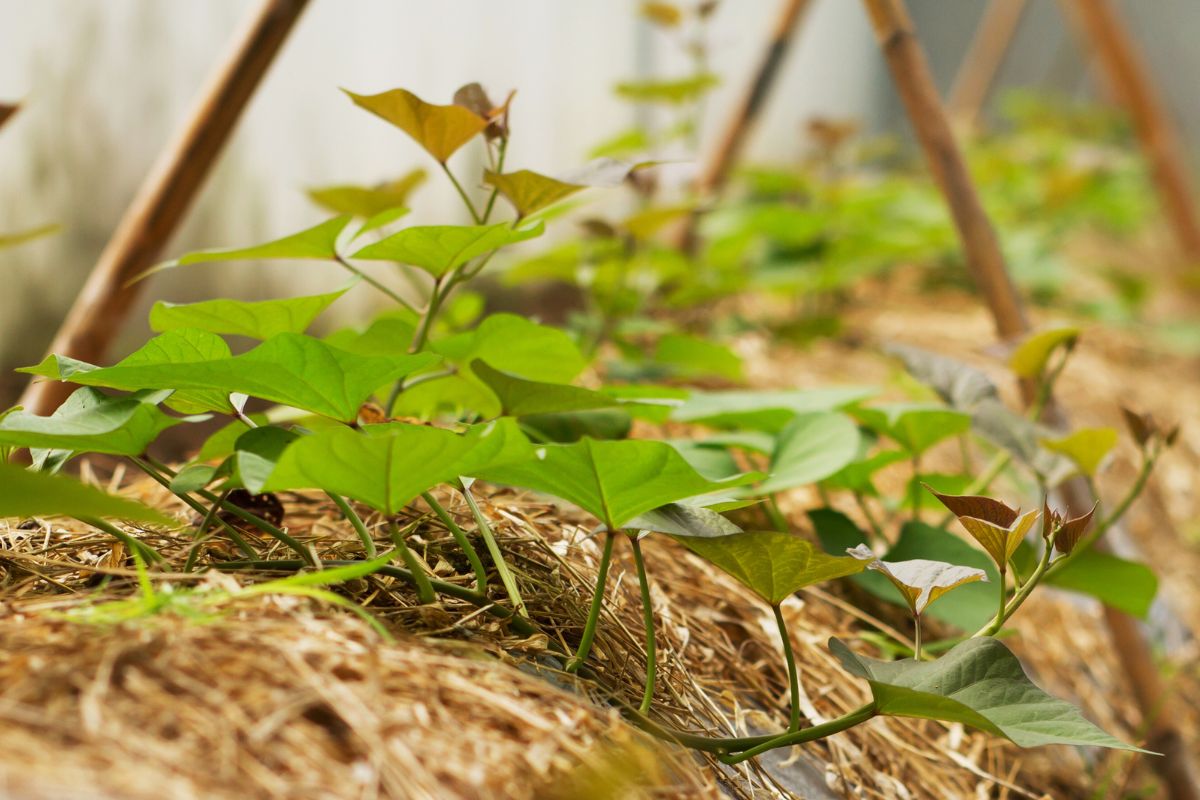Originating in tropical South America, sweet potato is a versatile vegetable that has become a staple crop around the world. Not only are the tubers delicious and high in nutrients and fibre, but sweet potato's edible leaves and shoots can also be cooked and eaten as a spinach substitute.
Botanically sweet potato is a member of the same family as the notorious weed Morning Glory. Like Morning Glory, the plant grows as a vigorous vine in full sun to part shade and prefers moist though well-draining soil. Unlike Morning Glory, sweet potato vines are unlikely to take over an entire backyard and creep into surrounding bushland, though they do appreciate having ample room to grow.
Sweet potato tubers are the swollen roots of the plant. Tubers are great energy stores, and each sweet potato tuber is capable of producing 10 to 15 shoots without the need for any additional nutrients. While you can plant the tubers directly in the garden, taking cuttings (often called 'slips') from the shoots is likely to produce a bigger, healthier crop.
Here’s how to get a sweet potato tuber to produce shoots, and how to turn those shoots into new plants for your garden.
Growing the Shoots
Shoots can be grown by placing the tuber in either water or soil. Either method will produce healthy shoots, though the soil method is reported to be faster. For whichever method you use, providing a warm environment will help to spur on the growth of shoots, and many gardeners choose to use a heat mat to ensure consistent warmth. Alternatively, keep the cuttings on top of the fridge or near a north-facing window.
Soil Method
- Fill a seedling tray or 20cm pot with free-draining potting mix. The potting mix should be moist but not wet.
- Lay the tuber horizontally on the potting mix and half bury it in the mix.
- Place the container in a warm, well lit position.
- Keep the soil moist.
- When shoots are 15-20cm tall, use a clean sharp knife to cut them off the tuber or twist them off at the base.
Water Method
- Fill a clean glass or jar with tap water.
- Determine which end of the tuber is the root end. The root end is narrow and tapered, and there may be some tiny roots visible. There may be small eyes visible on the sprouting end.
- Use toothpicks inserted into the tuber about halfway along it's length to suspend the tuber in the jar; the root end of the tuber should be pointing down and submerged in the water.
- Place the jar in a warm, well lit position.
- Replace the water weekly or as needed.
- Roots will grow first, followed by shoots.
- When shoots are 15-20cm tall, use a clean sharp knife to cut them off the tuber.
Cuttings can be planted straight in the garden or treated as water cuttings and put in a jar of water to grow roots before they are planted.
Planting the Cuttings
Cuttings taken from the shoots can be planted in spring and summer after all danger of frost has passed.
Prepare your soil by weeding it thoroughly, digging it over to 30cm deep and adding blood and bone or compost. Like most root vegetables, sweet potato will not form good sized tubers if there is too much nitrogen in the soil, so avoid adding extra fertiliser.
- Remove the bottom sets of leaves from the cutting, leaving just the top few leaves on the plant.
- Dig a 7-10cm deep hole or trench and lie the cutting horizontally in the soil. Make sure at least one leaf node (the point on the stem where leaves were removed and where roots will form) is buried and just the top leaves are left out of the soil.
- Cover with soil and water in well.
- Space cuttings 30cm apart, with rows 75cm apart.
Once the plants are established, ongoing care is fairly straightforward. Water deeply in hot weather. There should be no need to fertilise so long as the soil was friable and compost-rich when the cuttings were planted out. The tubers should be ready to harvest around four months after the cuttings were planted, or when the leaves begin to yellow. Dig them carefully with a garden fork and cure them in a dry, warm place for 10-14 days before storing them.
Growing sweet potato is a little more involved than growing many other vegetables, but the effort will be repaid with a bumper crop of healthy tubers.










